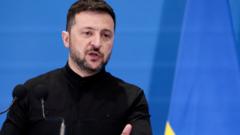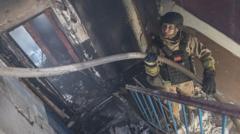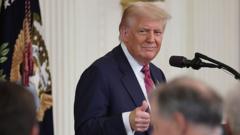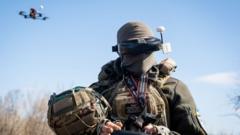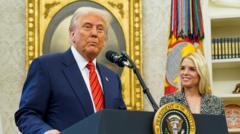The largest prisoner exchange of the ongoing war is set to take place between Ukraine and Russia, reflecting a thin glimmer of hope for renewed negotiations despite substantial challenges.**
Landmark Prisoner Exchange Initiated Between Ukraine and Russia Amid Ongoing Conflict**

Landmark Prisoner Exchange Initiated Between Ukraine and Russia Amid Ongoing Conflict**
Major prisoner swap aims to foster trust as negotiations falter.**
In a significant development amidst the ongoing conflict, Ukraine and Russia are poised to execute a historic prisoner exchange, marking the largest swap of the war thus far. Announced by former President Trump, this anticipated exchange involves 1,000 prisoners from each side, a vital step as both nations continue to seek a path towards peace.
On social media, Trump confirmed that “a major prisoners swap was just completed” after a week of negotiation leading to this pivotal agreement. While details are scarce and the logistics of the swap are still unfolding, this event has the potential to build much-needed trust between the two adversaries, who have faced considerable setbacks in achieving a cease-fire agreement.
In recent negotiations held in Turkey, Ukrainian and Russian officials convened for the first time in about a year, focusing primarily on the terms for this exchange. President Volodymyr Zelensky declared, “The agreement to release 1,000 of our people from Russian captivity became perhaps the only tangible result of the meeting in Turkey.” However, the anticipated 30-day cease-fire proposed by Kyiv and Washington remains unmet, as Russia demands Ukraine's withdrawal from contested territories as a precondition for any truce.
Both nations remain entrenched in their positions, with little promise of an immediate cessation of hostilities beyond the prisoner swap. As this negotiation unfolds, the exchange offers not just a humanitarian respite but a potential pathway towards more substantial discussions aimed at ending the conflict. Constant Méheut continues to report on the war, its impacts on civilians, and the broader implications of military actions.


